Specialists in the conservation and repair of traditional and listed buildings
Some external church walls have been previously covered in a cement based render this has lead to water ingress into the church and damage to the surface finishes within the Chancel. The church has requested that the cement render be removed and remedial work to be carried out to stonework beneath.
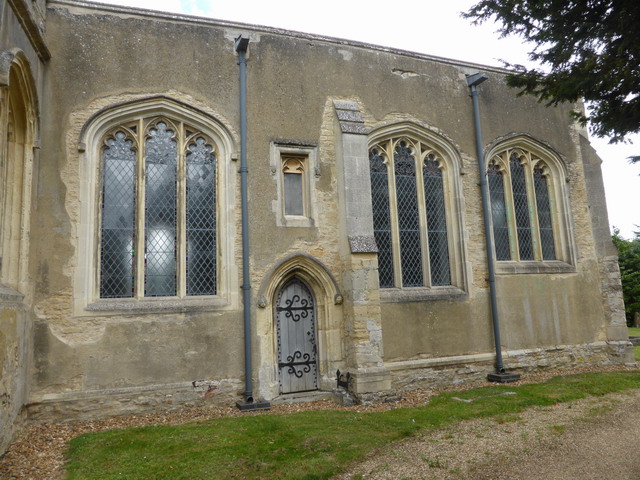
The South wall of the Chancel showing the render which has cracked in areas allowing water into the fabric of the church.
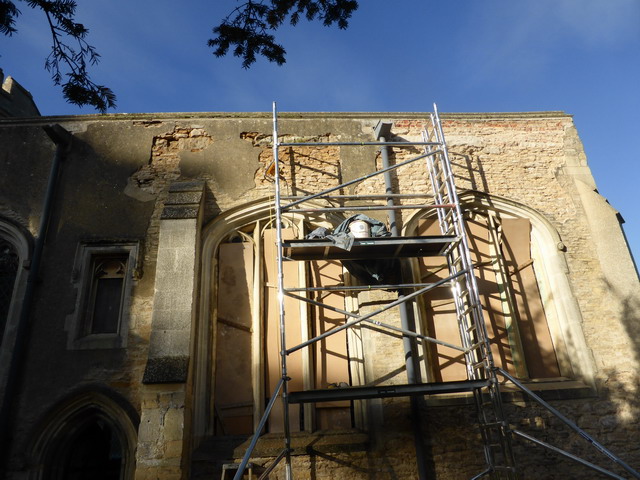
The cement render is being removed.
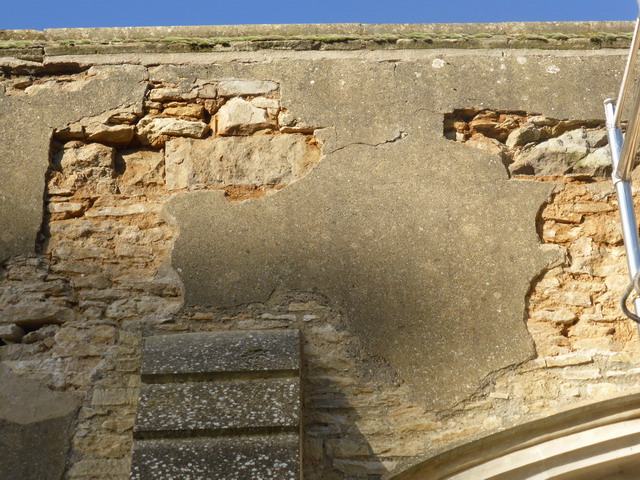
As the render is taken off the damage to the stonework beneath is revealed.
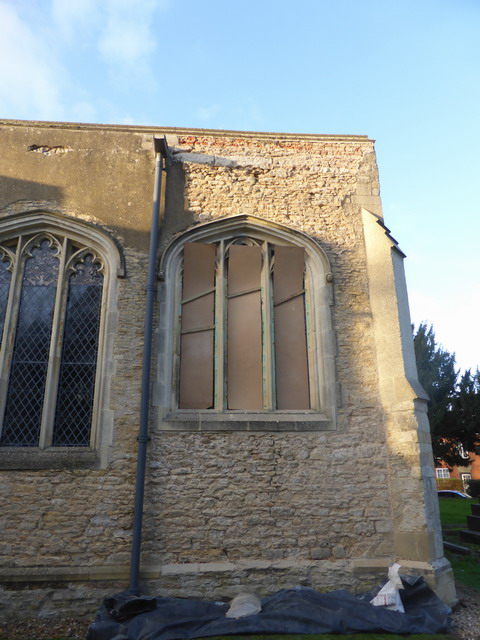
Once the cement render is removed the church walls begin to look as they should!
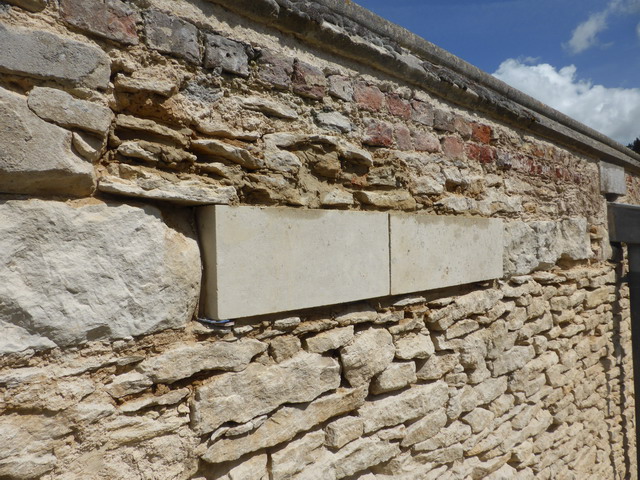
Removing the render revealed a course of clunch limestone. Some original clunch was decayed so these stones were removed and replaced with new clunch.
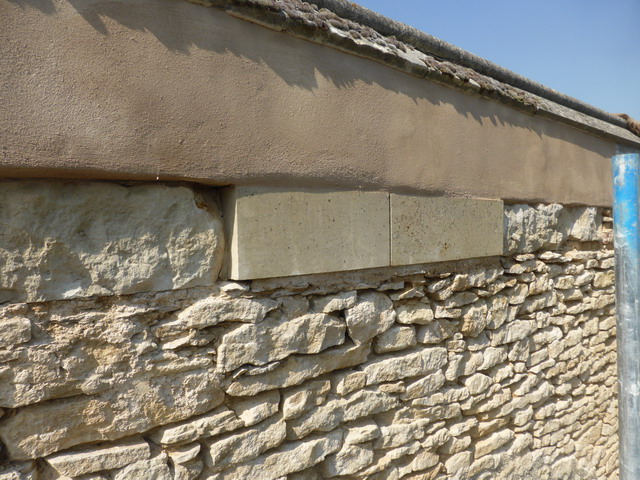
The stonework under the copings and above the new clunch stone was in poor condition so to limit intervention this area was lime rendered to provide protection.
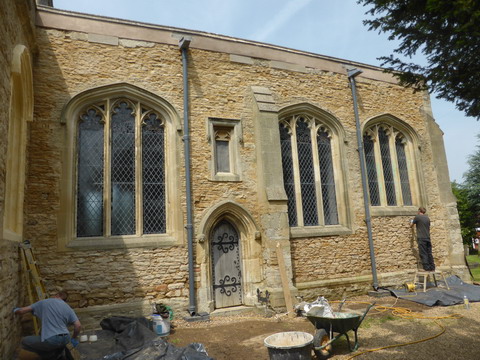
The project nearing completion. The new clunch blends in with the original and the wall has been repointed with a matching lime mortar. The wall is now able to breathe and damp patches on the inside of the wall will dry out now the cement render has been removed.
Various mortar repairs, shelter coats and limewashing were carried out at St Mary’s on the tower openings plinths, string courses and buttress weatherings. The original tracery was made from locally sourced clunch stone but had been rendered in the 19th c. The repairs involved removing the defective lime based render and applying a lime mortar repair with armatures to all defective areas. All sound areas of render were left in place.
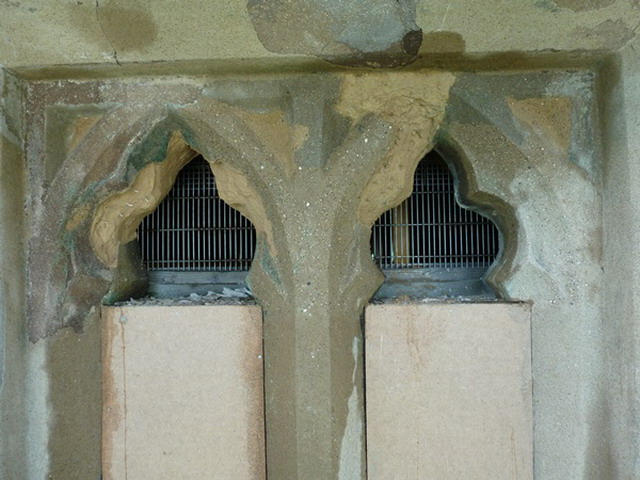
Defective render removed and armatures fixed ready for mortar repairs.
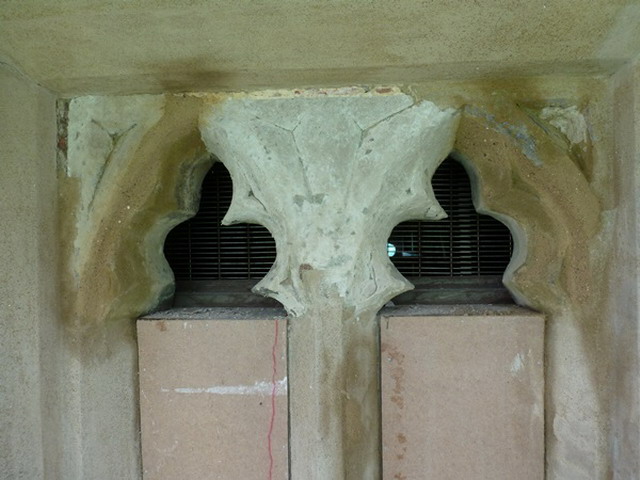
A repaired section awaiting limewashing.
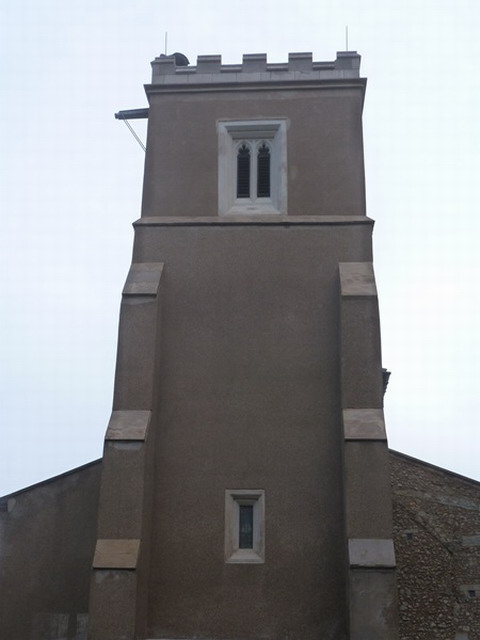
The tower of the church showing string courses, weatherings and plinths limewashed to match in with adjacent render and the window openings limewashed to blend in with the clunch stone within the openings.
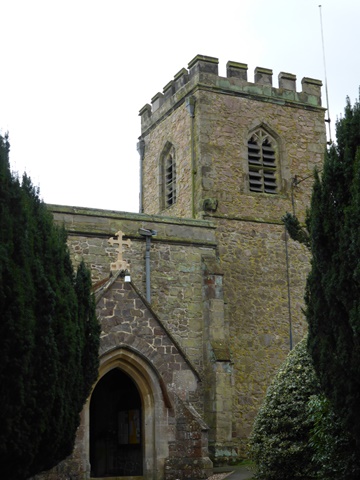
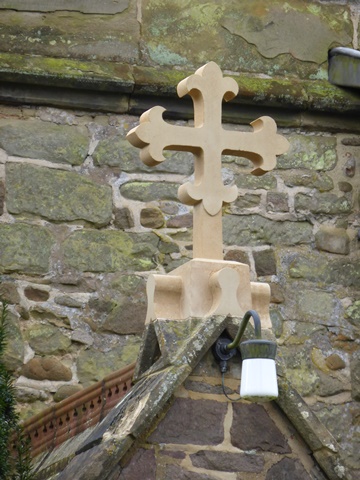
Due to long term erosion the existing cross fell from the the roof of the North Aisle porch.
Using the fallen cross as a template a new cross made from Ketton stone and was fixed into place. The top section of the stone beneath was found to be cracked so a new section was also added.
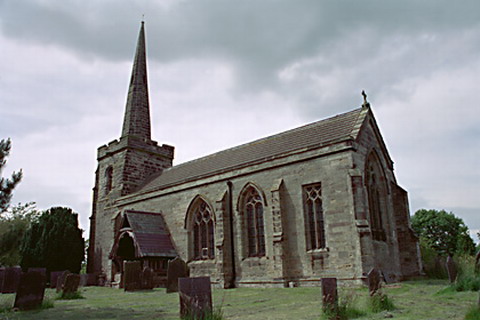
Work was completed on repairs to the North Aisle roof, internal plaster repairs and a new drainage system.
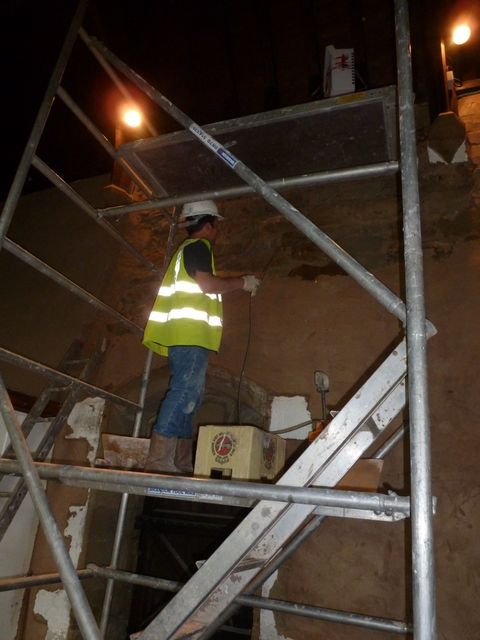
The internal wall of the North Aisle has been re-plastered with non hydraulic lime. The existing was a cement based render that was up to 40mm in thickness!
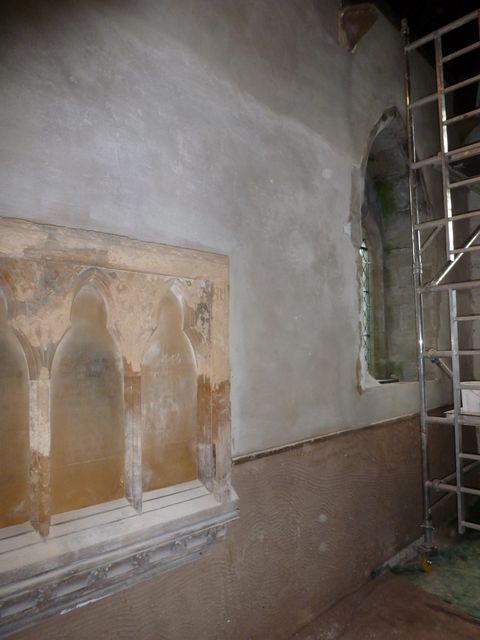
The sandstone memorial stone within the Aisle was suffering due to salts being deposited within its pores. This was caused by the presence of the cement render. The memorial was conserved.
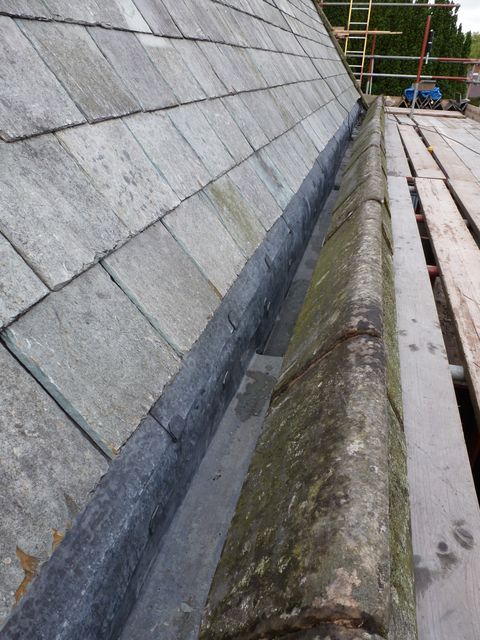
The Aisle re-roofed. Limecrete was used to provide the correct falls and new lead gutters installed. As many original slates were re-used as possible.
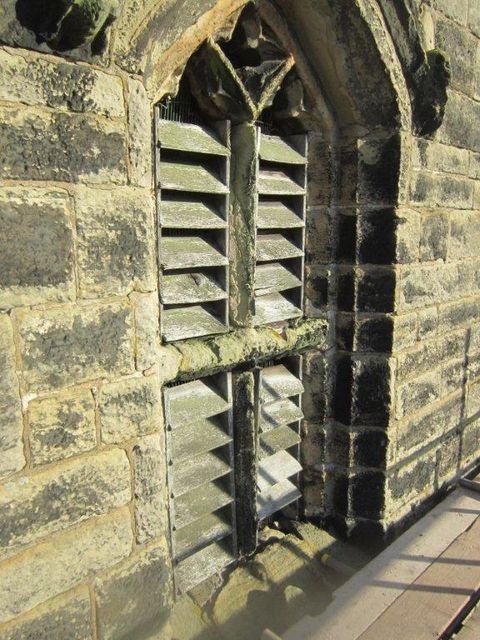
New mullions and transoms were installed on the church belfry windows.
The existing stonework within the windows was in a poor state of repair. The decay problems were made worse by the use of a cement mortar in earlier repairs. The windows were repaired using Hollington sandstone.
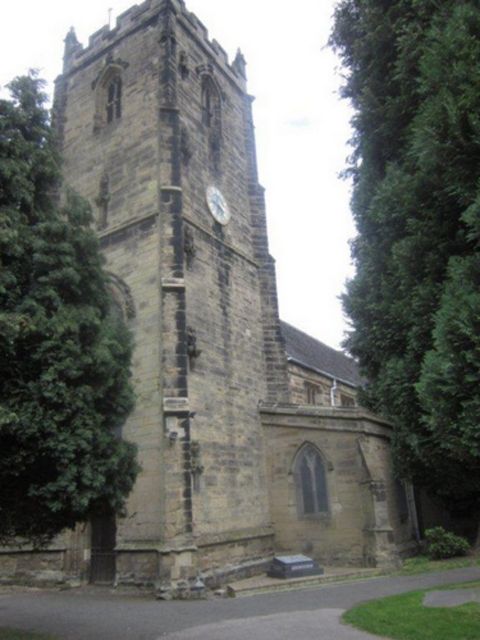
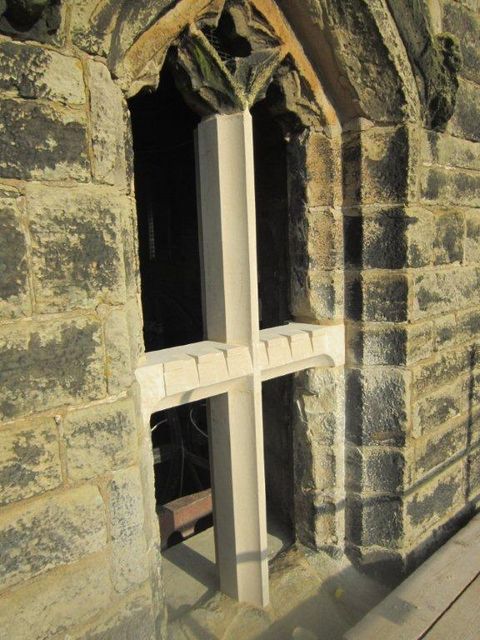
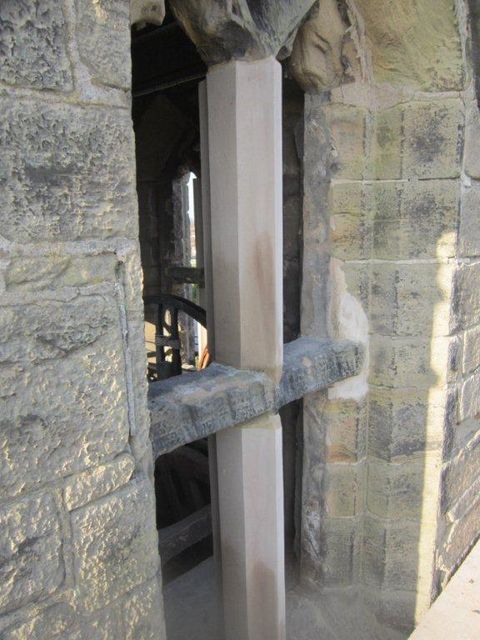
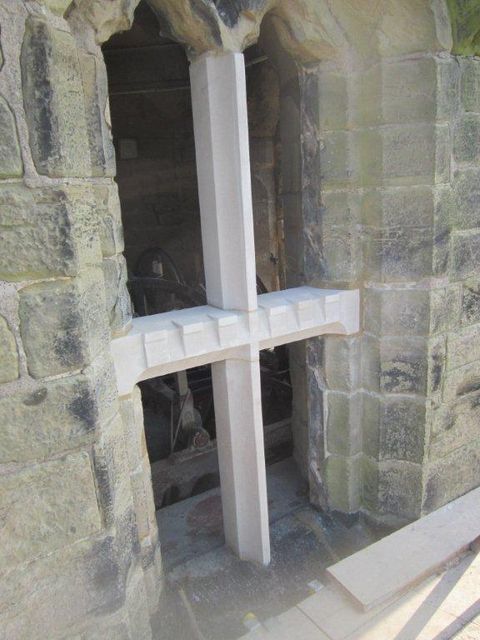
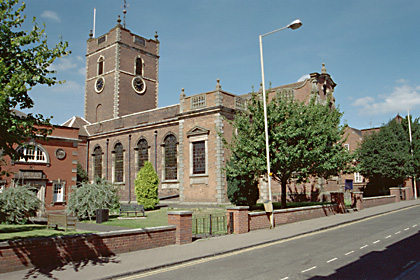
St Thomas’s is a Grade 1 church. Began in 1726, it has a highly decorative barrel vaulted plaster ceiling with enrichments in the form cast in-situ mouldings.
The ceilings in the Aisles have been recently replastered. The main concerns are the cracks within the plaster ceiling of the Nave. These cracks have been surveyed and repair work based on the survey is taking place.
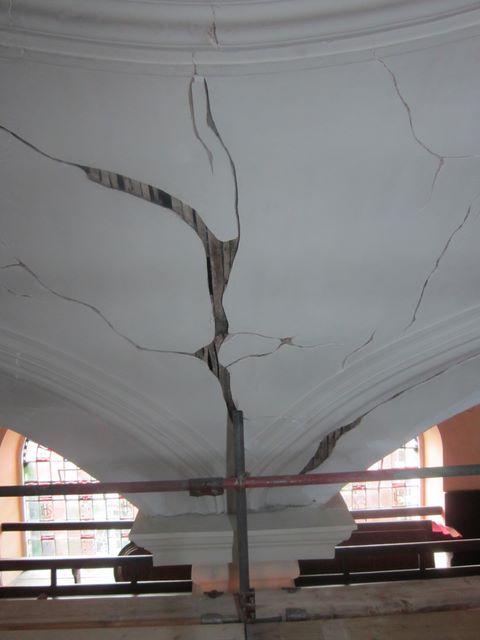
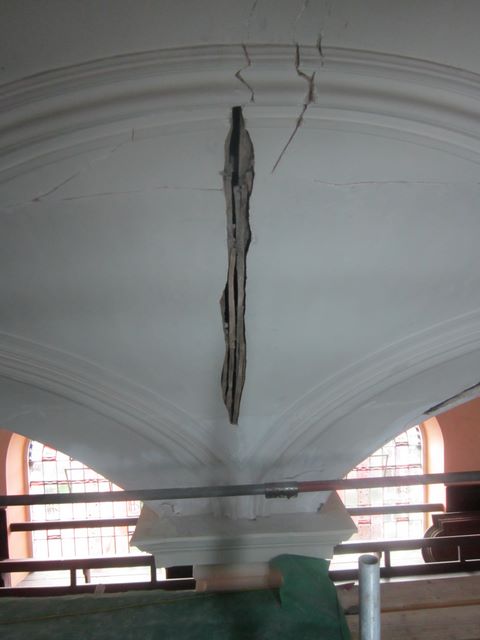
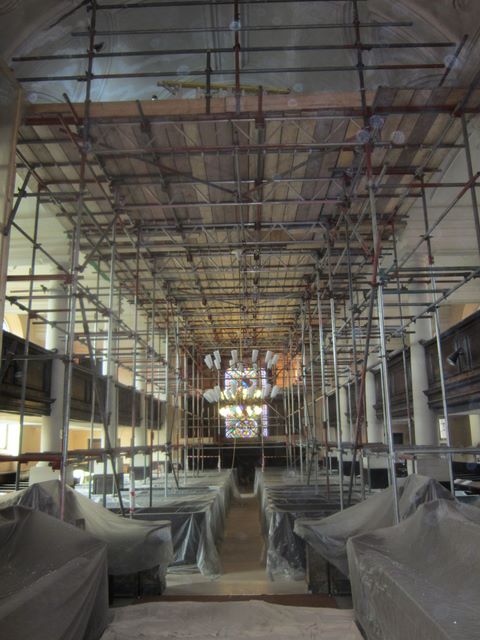
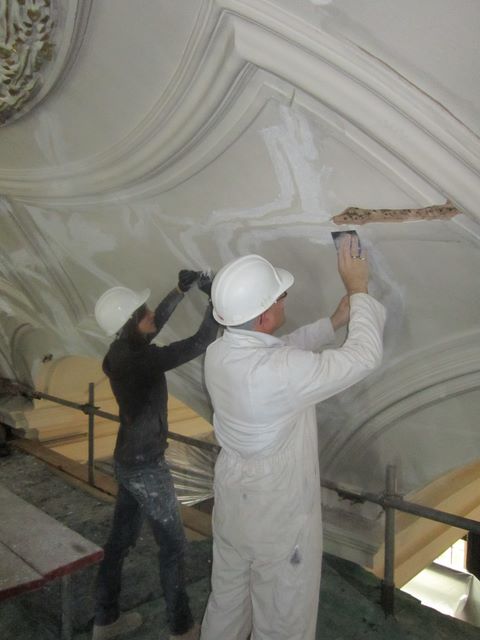
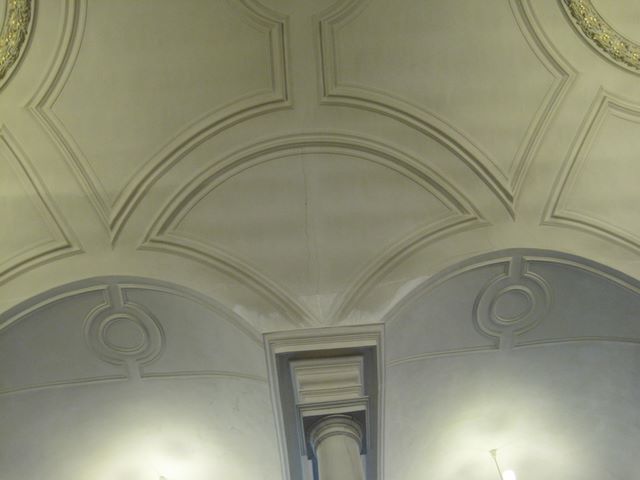
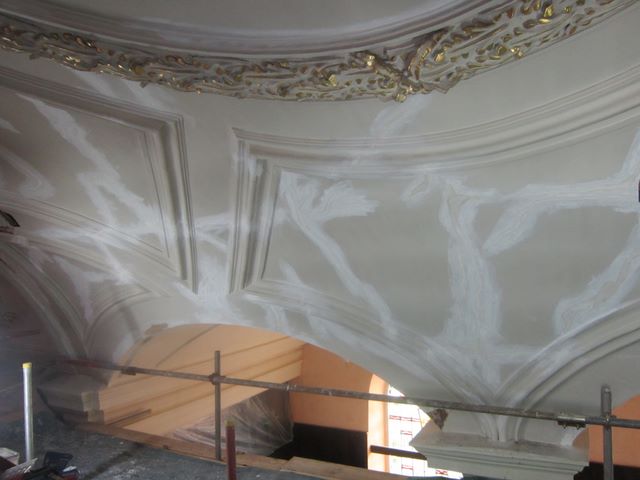
Work has started on repairs to the stonework on the tower of the church. This 19th century gothic revival church was built between 1825 and 1829 iby the renowned architect Thomas Rickman. The church is regarded as one of his better churches. It was built using sandstone but this is decaying at high level. The standard of workmanship is exceptional.
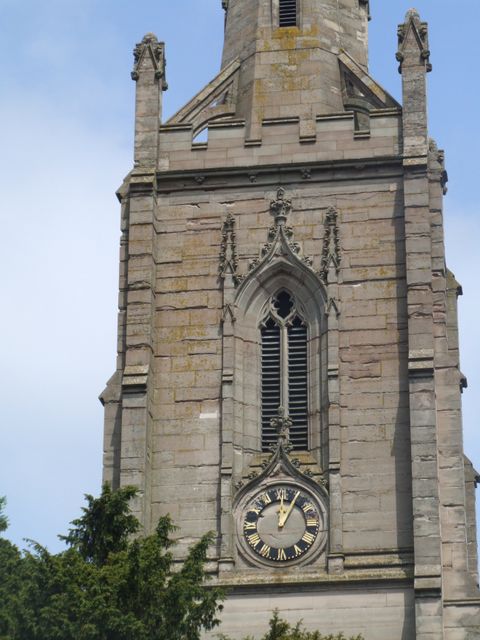
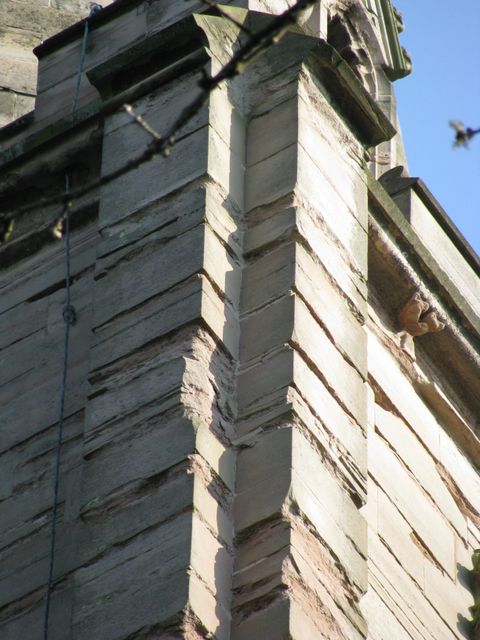
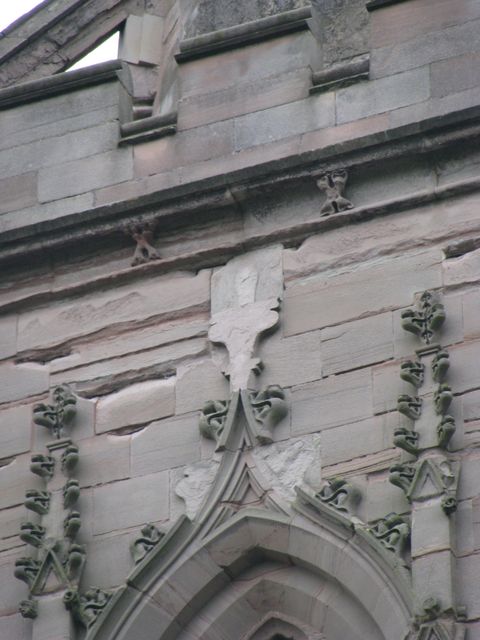
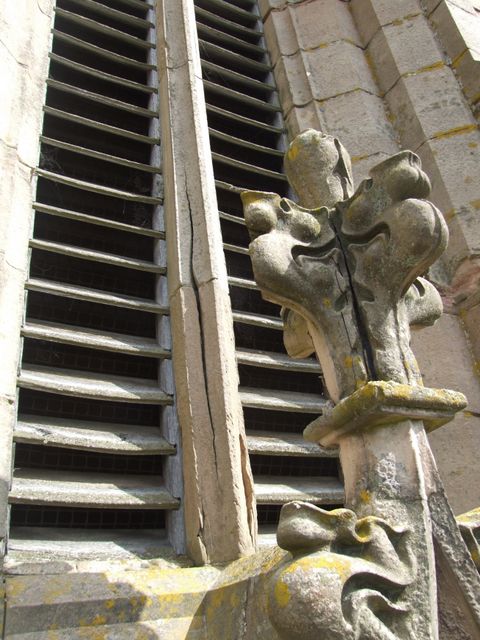
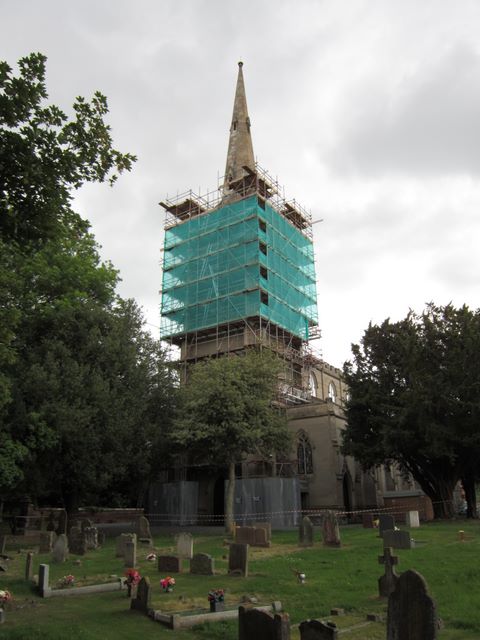
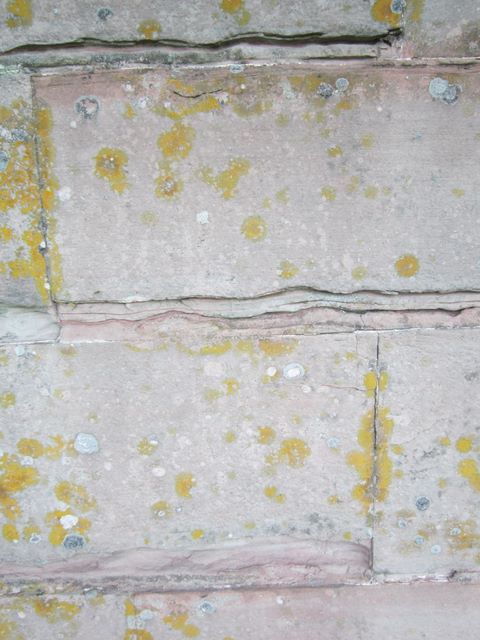
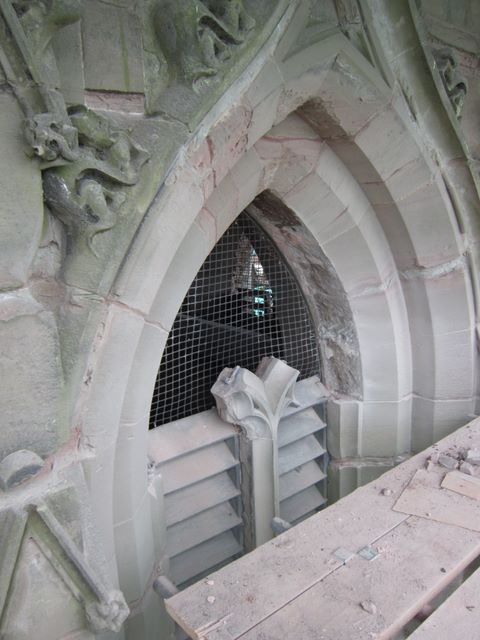
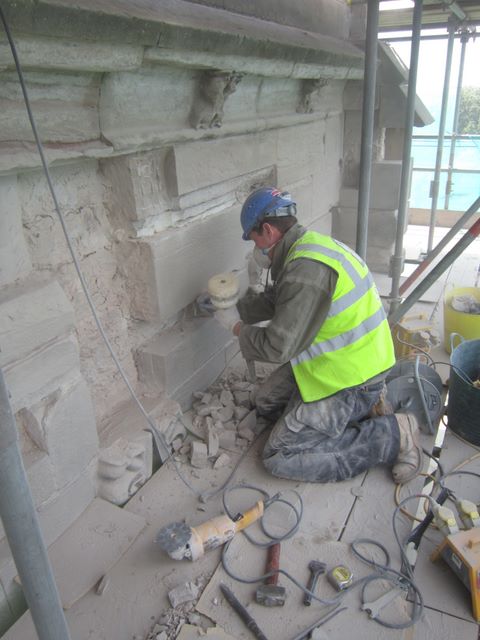
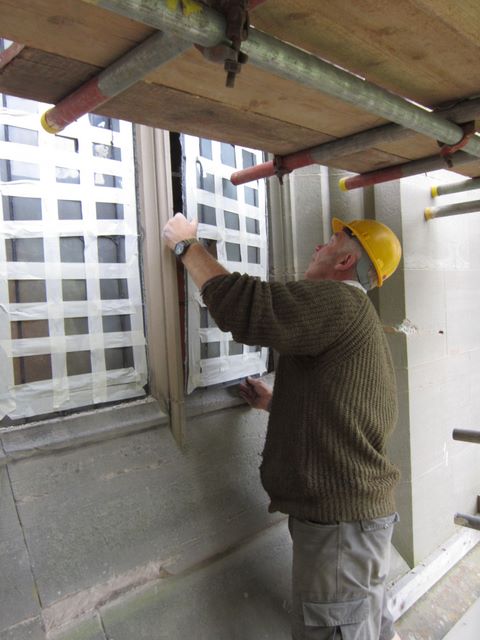
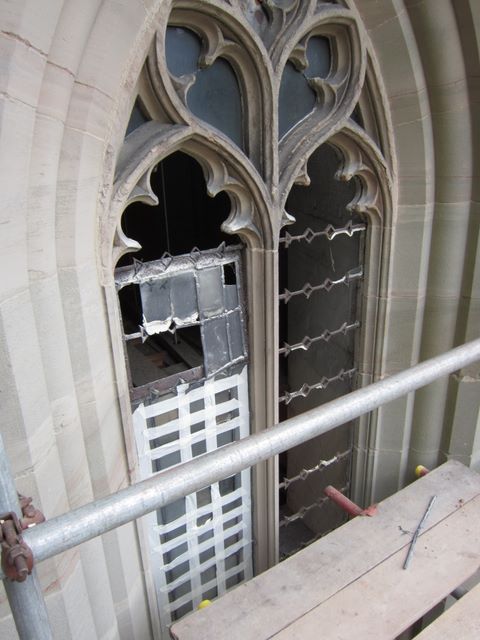
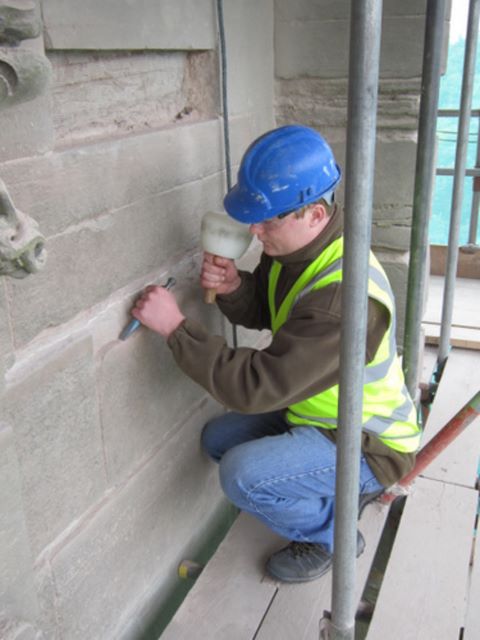
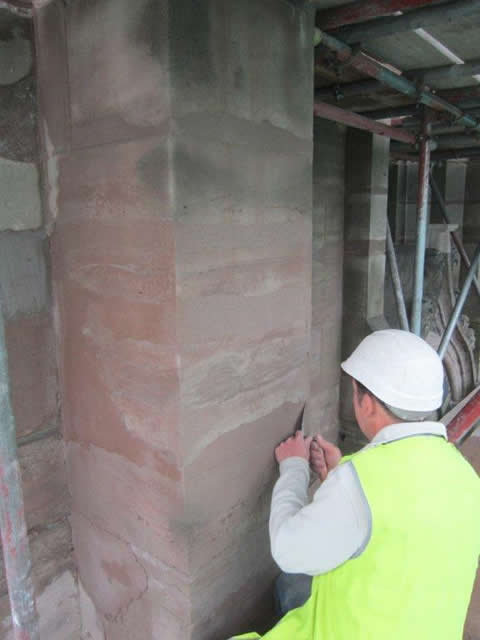
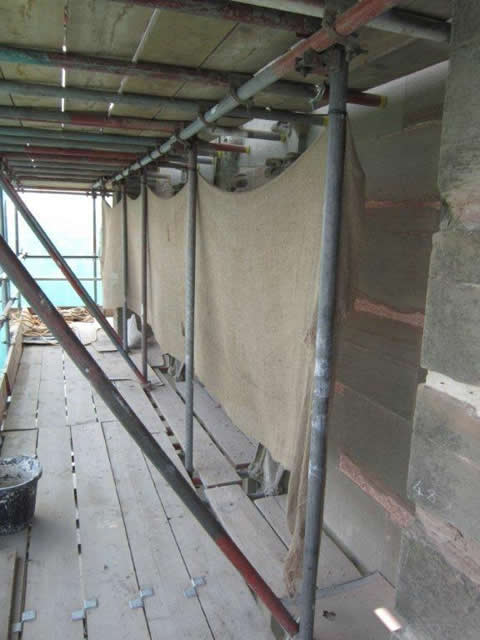
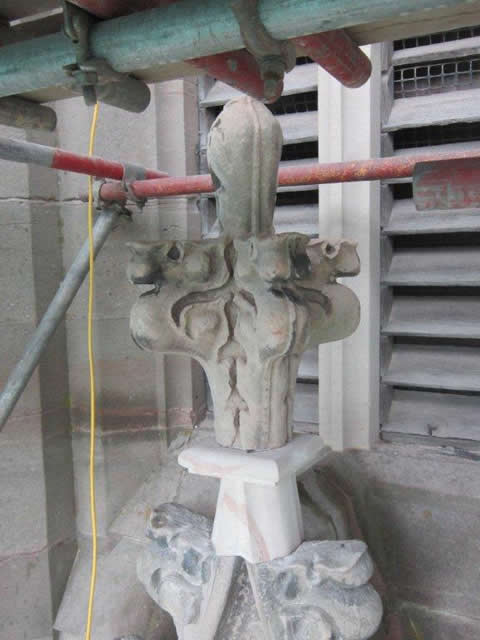
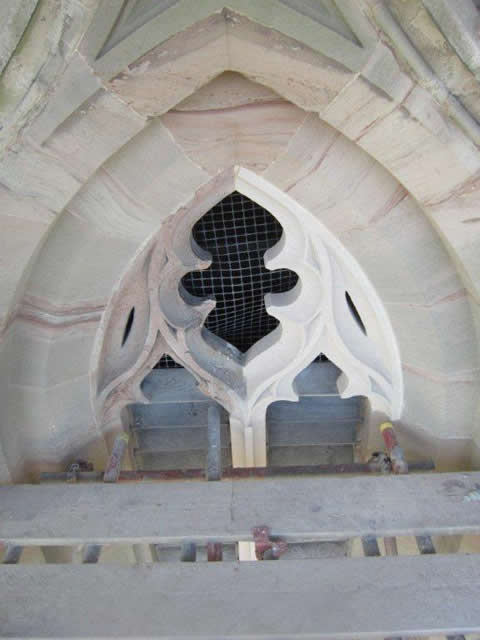
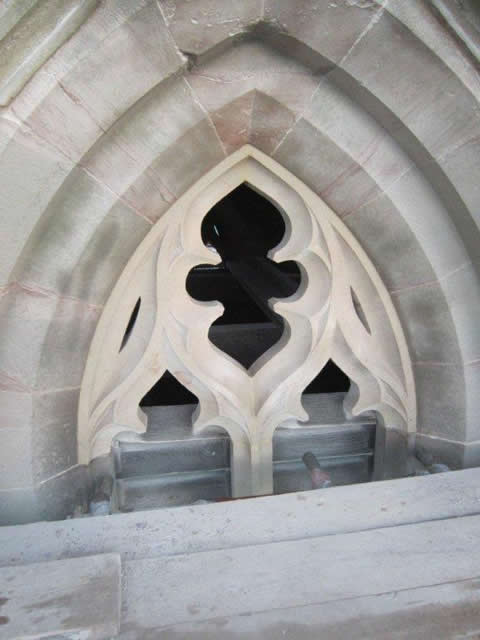
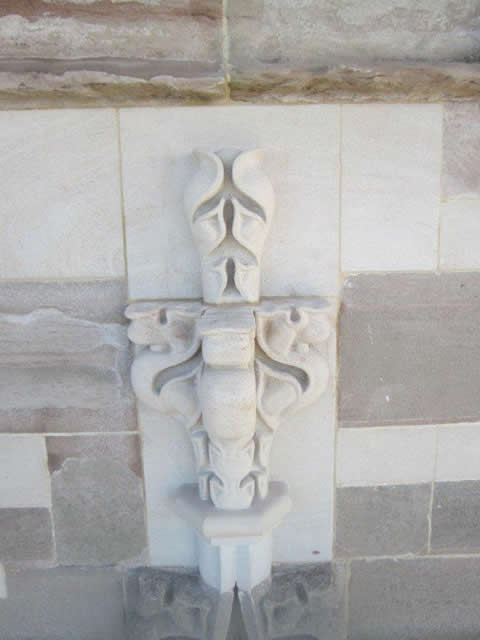
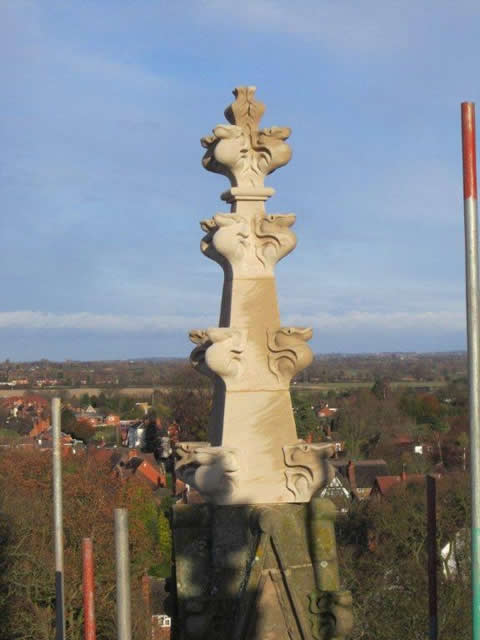
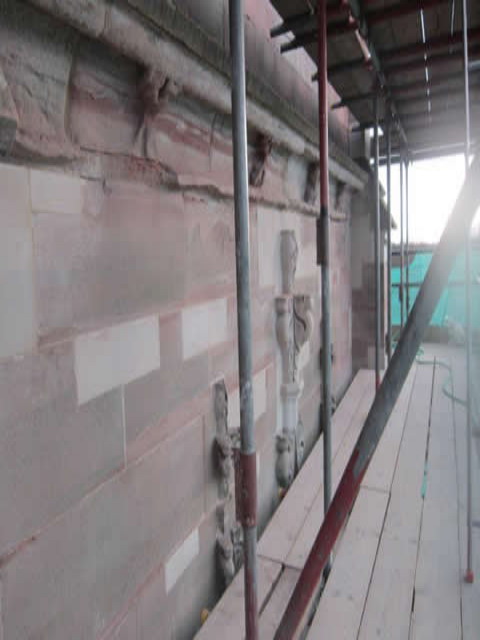
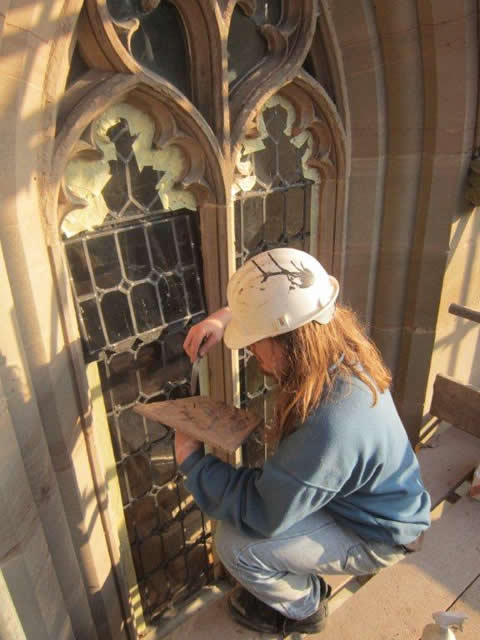
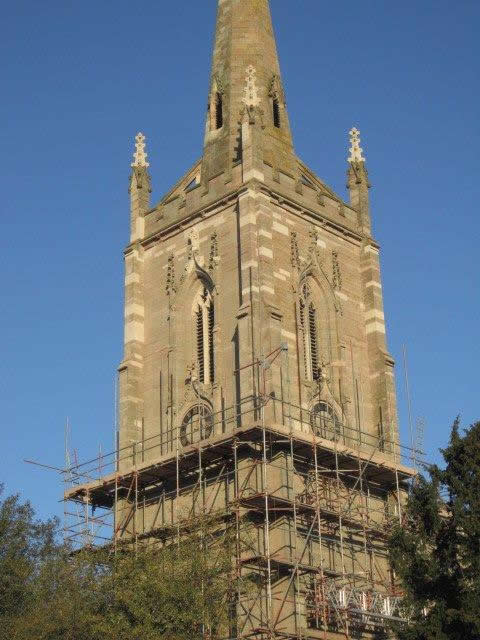
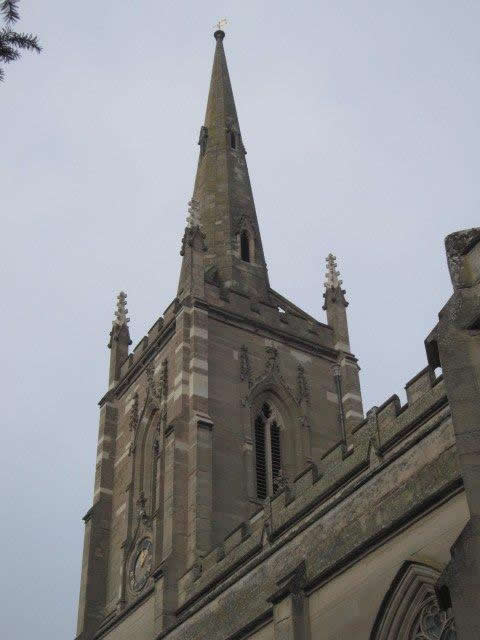
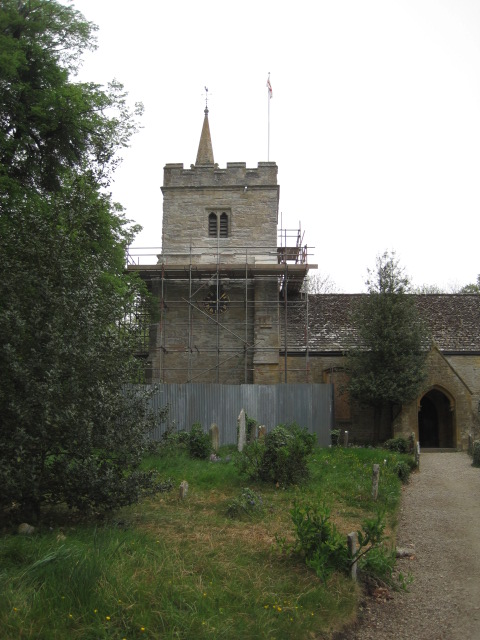
The quinquennial report for the The Church of St James in the village of Birlingham in Worcestershire had picked up the need for stone replacements on the tower.
A new mullion was fixed on the East elevation and several stones on the string course beneath the belfry windows were decayed and allowing water to run down the surface of the stonework. The new stone was Grinshill sandstone that was the nearest match to the original sandstone.
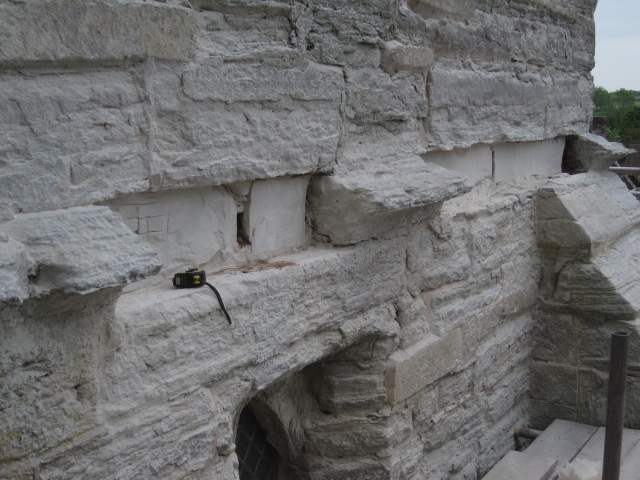
The old sandstone on the string course in the process of being removed.
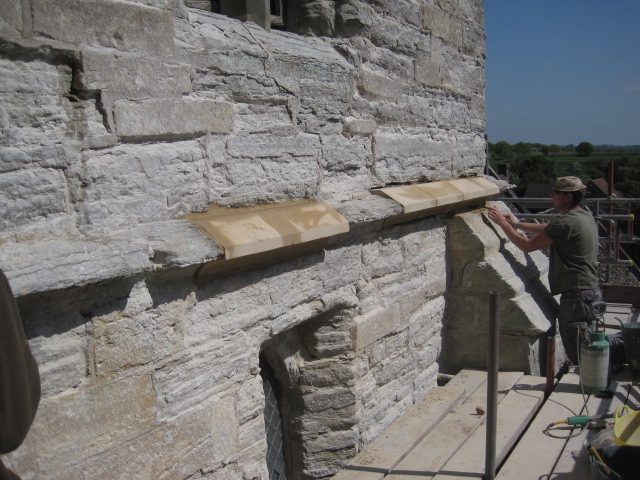
The new stones have been installed back to the profile of the original stones.
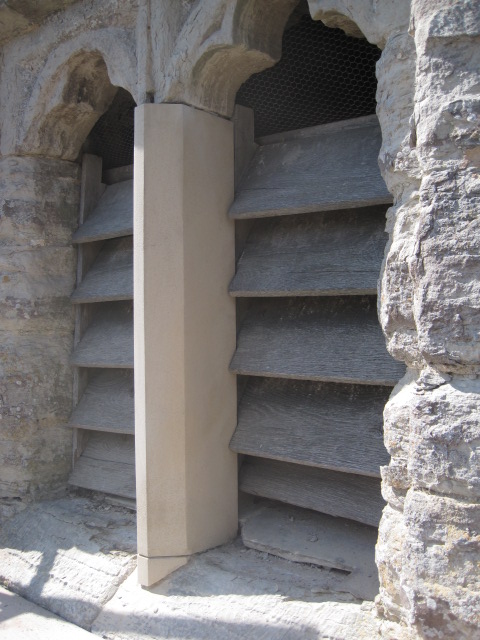
The new mullion fixed prior to pointing.
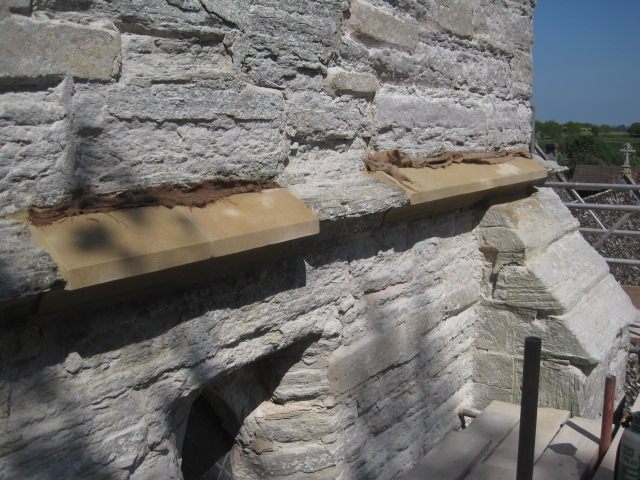
The new completed stones on the string course on the South elevation. Due to the strong sun the stones were kept damp and covered in hessian to assist curing.Lorem ipsum dolor sit amet, consectetur adipiscing elit. Ut elit tellus, luctus nec ullamcorper mattis, pulvinar dapibus leo.